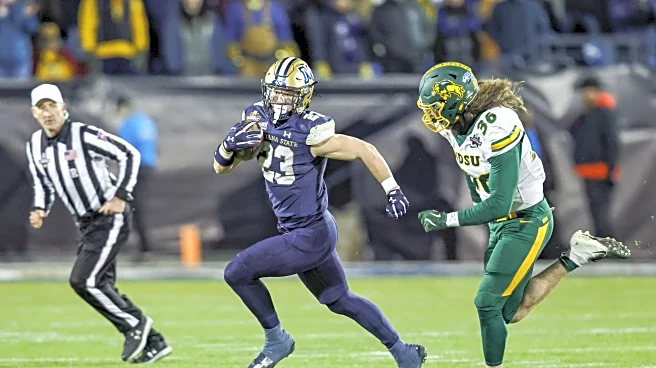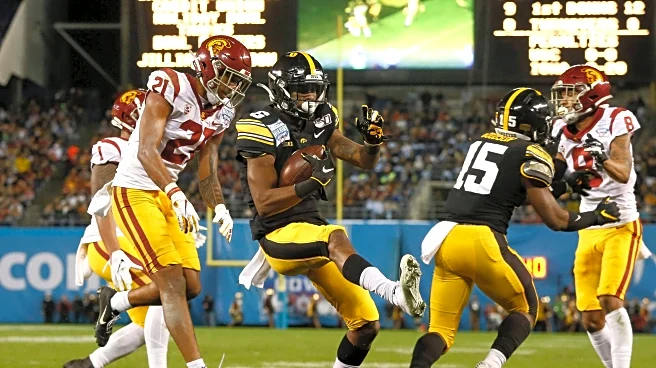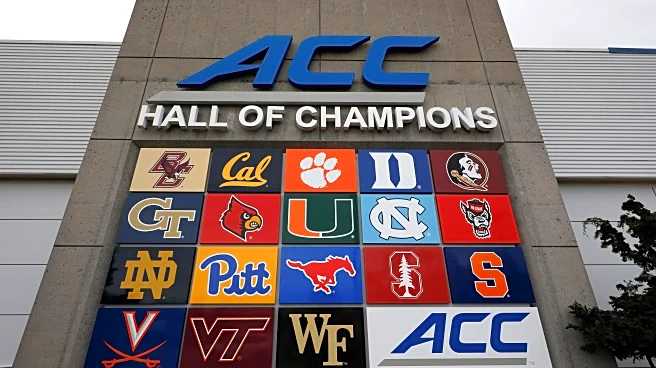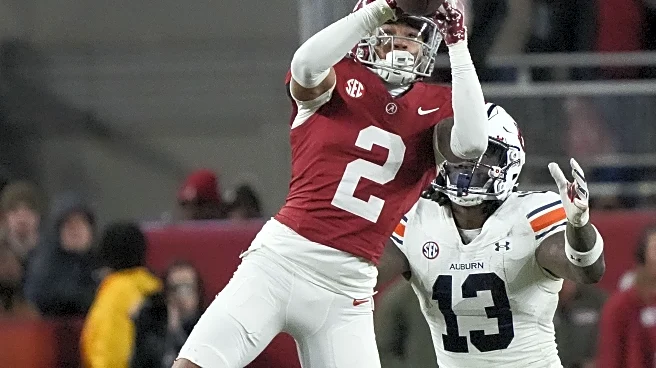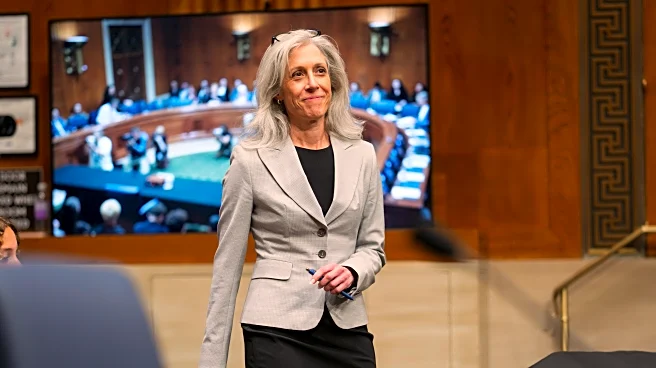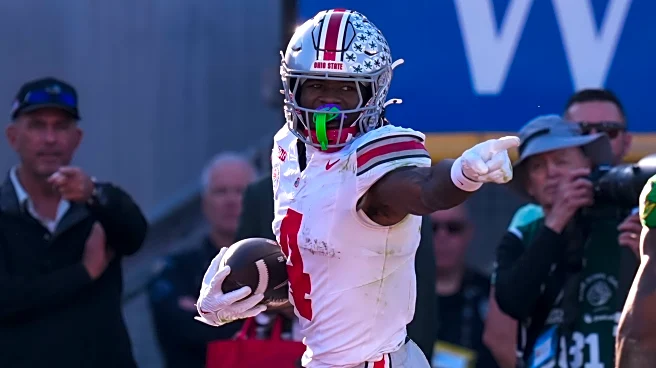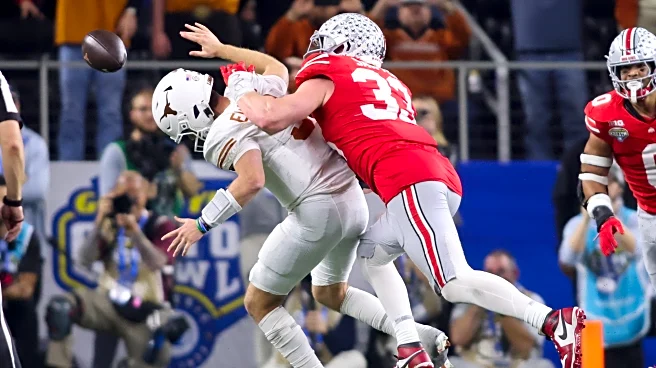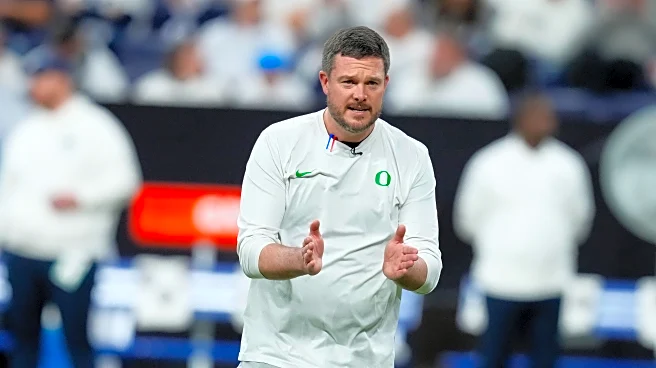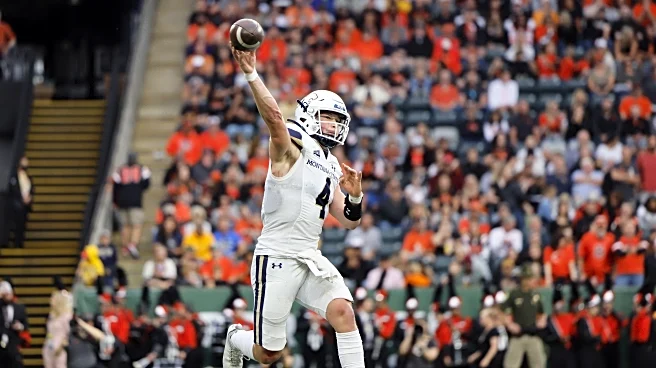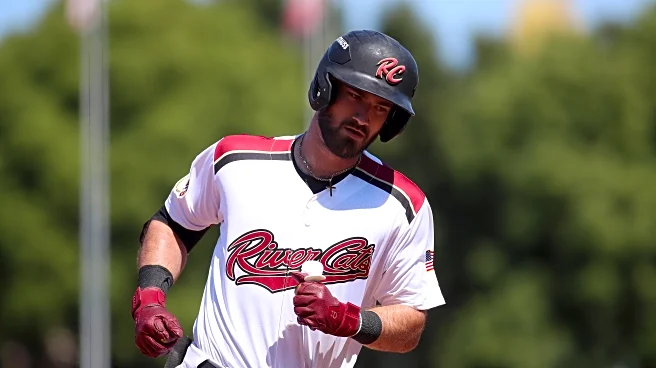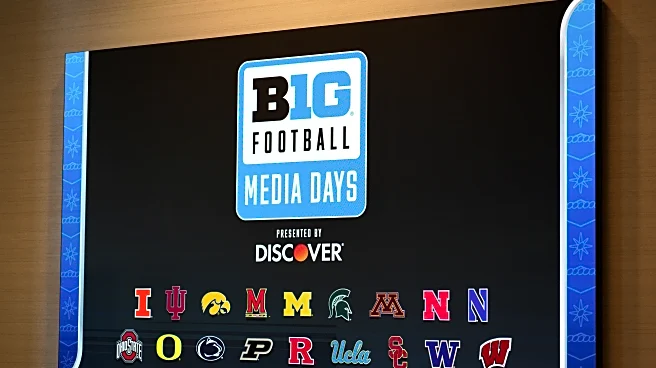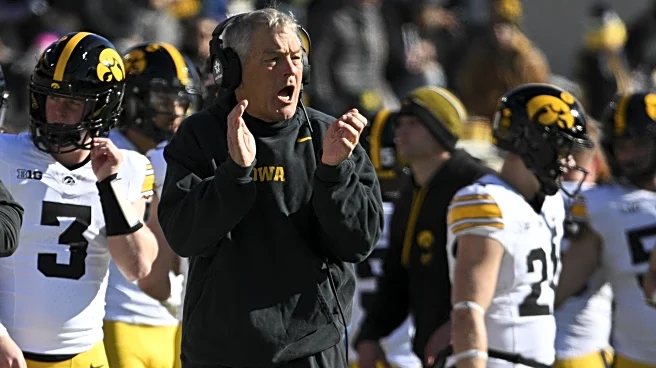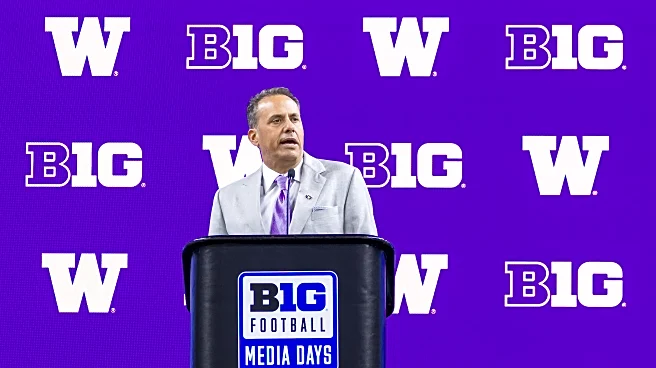
Special thanks to Ryan Thornburg of the R&R Cat Cast for joining me to discuss Montana State’s roster on this week’s podcast:
Montana State was one of the most dominant teams in the FCS last year, finishing 15-1 en route to a national title game against North Dakota State. They won a dozen of their games in blowouts with an average of about 20 minutes of gameclock remaining when I considered garbage time to have begun while charting the Bobcats’ full 2024 season. And as Ryan pointed out on the podcast,
the team saw more than a month of extra practices during the playoffs, which all added up to extensive developmental time for the backups and 2025’s incoming starters.
While MSU loses a good deal of production from what was a senior-heavy team at the skill positions — in particular, multiple-year leaders quarterback Tommy Mellott, safety Rylan Ortt, and cornerback Simeon Woodard I think will be real challenges to replace, among other key seniors — what Ryan and I discussed throughout the podcast as making the Bobcats perennial playoff contenders is continuous dominant play in the trenches. That was evident on both sides of the ball in 2024 and with the amount of returning starters and rotational players from the offensive and especially defensive line along the edges, as well as the vast amount of developmental time they’ve had and the emphasis it’s been under Coach Vigen, my expectation is that the Cats will continue to lead with their lines in 2025 and return to the playoffs again.
Offense

Replacing Mellott at quarterback will be a tall order. Montana State has used a running quarterback for quite some time and he was quite an athlete in the read-option run game, but as we discussed on the podcast 2024 was the first time that Mellott was trusted as the solo QB instead of as part of a two-QB system (Ryan said in the past they’ve called it the “Big Cat / Little Cat”). That paid off with a spectacular 177.7 NCAA passer rating, more than two full standard deviations above what the median is for FBS quarterbacks (it’s even better than for FCS QBs in general; the Big Sky conference historically tends to overperform the subdivision offensively but 2024 was a down year for that league other than Mellott). He took care of the ball very well with a high completion rate and low interception rate, good placement to let receivers catch and run for 15+ yard gains, though he was very choosy over the middle or on deep routes.
Ryan and I discussed the possibility that they might return to a two-QB system because of how much time in last year’s offense one of the backups got, #13 QB Wilson, and the fact that the transfer that they brought in from Stanford, #8 QB Lamson, was last seen as the second quarterback in a very similar system. It’s a possibility that might happen on Saturday, but talking it out on the podcast with Ryan, I think it’s unlikely for a few reasons.
First, the depth chart released just before we recorded — and Ryan said that unlike a lot of programs, Vigen doesn’t fool around and usually releases accurate information on these — named Lamson as starter and #15 QB Duchien as backup. That was confirmation of the second piece of news, which was Ryan hearing out of Fall camp that Wilson had played himself out of a job and Duchien into it. This setup with Lamson as starter and Duchien as backup, as well as a move on the left side of the o-line and the elimination of the fullback position I’ll discuss below, indicates a move towards more of a pocket passing offense under new OC Sterbick and what Vigen was running during his time as OC at Wyoming.
The upshot is that I think the offense is likely to lean on its run game heavily, perhaps with some designed QB power runs since Lamson has some experience with it, and try to generate explosives from play action. This was effectively the version of the Stanford offense that the Cardinal switched to when Lamson swapped in for the bread-and-butter RPO QB over the last two seasons, and as my previous film study on that team showed it had the advantage of producing more of an explosive offense with the same tools, albeit much less efficiency as Lamson hasn’t cracked 100 in his career NCAA passer rating.
Here’s a representative sample of Lamson’s performance from charting:
(Reminder – you can use the button in the lower right corner to control playback speed)
- :00 – Here’s one of the two-RB sets we talked about on the podcast as a potential substitute for the fullback, providing extra protection on the deep shot. Lamson shows off his big arm on the sideline route, since he’s not able to step into the throw this is all coming from upper body strength, and he still provides good ball placement.
- :13 – This showed off the two big problems with Lamson’s time at Stanford, first that they always needed seven blockers and still couldn’t protect so he had short pocket times and limited receiver pattern counts, and second that he’d lock on and stare down his guy no matter how well covered he was. This just isn’t the throw, given the safety leverage he needs to hit the opposite pylon.
- :30 – QB power constituted the majority of plays I actually have film on Lamson running, he’s a big kid and I like the way he puts his shoulder into the OLB to break through the line.
- :39 – While Stanford with Lamson in would often run in long yardage to catch defenses sending edge rushers against the pass and leaving the middle open per above, they’d pull the opposite trick on shorter yardage and throw against the extra pressure. With ILBs crashing, the OLB has to bail backwards to cover the crosser, so the DBs are outleveraged and undermanned to handle the quick out. It’s a long throw from the opposite hash but Lamson has the arm for it.
At running back in 2024, I think the order if everyone were healthy would have been senior #32 RB Davis as the primary back and then-true sophomore Scottre Humphrey as the secondary back, with the rest of the room battling it out for the remainder of meaningful carries and extended garbage time – those being a couple of redshirt freshmen at the time, #23 RB A. Jones and #28 RB Coon, plus a redshirt sophomore #3 RB White. But Davis, a high 3-star who originally enrolled at Wisconsin in 2019 and has battled injuries his entire career, missed most of the season taking a medical redshirt, coming in only for the last four games of the regular season, then either re-injuring himself or just not feeling confident enough in his recovery because he sat out the playoff run. So the order instead became Humphrey as 1A and Jones as 1B, with Coon and White mostly relegated to garbage time. Humphrey transferred to New Mexico, but the rest return in 2025.
Humphrey was very effective running behind this offensive line, with a 67% success rate and 6.7 adjusted YPC; when Davis returned he had enough meaningful carries for evaluation and he looked great too, 61.5% and 6.2 adjusted YPC. Mellott was fantastic in the read-option game, excluding sacks and scrambles on called passing plays he had a 71% success rate and 9.5 YPC. In that context, Jones’ numbers, while above average, are below baseline for the capabilities of the team, and Ryan’s comment on the podcast that he works best as a second back, not primary, made sense to me – Jones came in at 51.5% and 5.2 adjusted YPC. In raw stats, Humphrey and Jones finished near identically, but this was due to field position effects on a tiny number of explosive runs; a tranche analysis shows that Humphrey was stuffed on fewer of his carries and had a higher proportion go for good, great, and excellent yardage:

So I think Ryan and I are in agreement that the effectiveness of this room comes down to a question about how much Davis is ready to play … in fact I couldn’t even get a question out on the subject before Ryan jumped in with excitement for Davis and well wishes for his health. If Davis has his legs fully back under him, he’s very hard to deal with. If he’s limited, then it falls to some other questions – has Jones taken a step forward, can Coon or White be the guy even though multiple backs their age or younger took precedence over them last year, and could any of the four freshmen (two direct preps, two transfers) take us by surprise?
Here’s a representative sample of Davis and Jones last year:
- :00 – This was the bread-and-butter outside run last season for Jones, nice acceleration as he turns the corner and up through the open hole from some great blocking by the RT and H-back, and he goes into contact well without a lot of dancing to get a solid four more yards.
- :07 – And here’s Jones when the hole’s not there, very little generation on his own. This was the biggest individual situational gulf in 2024: all other rushers had a cumulative 65.5% success rate running on 2nd & long, while Jones was successful on just three of his for 12.5% efficiency.
- :23 – Here’s Davis, his balance and running style is obviously different.
- :42 – From the final game of the regular season, I figured we’d get to see Davis during the playoffs because he was getting nine yards a carry every touch in the first drive and just knocking the Grizz around, really running with violent cuts and finishing plays hard, so it was a surprise that this was the last we got to see of him in 2024.
The fullback position looks like it’s been eliminated at Montana State. The starter last year was Rohan Jones, although he was much more often used as a receiving target and fairly effectively with a 58% success rate, and he’s now transferred to Arkansas. The fullback who actually blocked from the position was Max Murphy, who’s too young to have graduated but simply no longer appears on the roster, and no one is designated as such anymore. They’ve also lost one of what I’d characterize as three adjunct pass catchers in 12-pers sets, Ryan Lonergan, to graduation; he was actually even better on a per-target basis at 69% and 14.0 adjusted YPT and probably should have been thrown to more.
The other two young tight ends return, I didn’t get quite enough on either for statistical evaluation but both of their tape was suggestive of bright futures with some nice hands catches, those were #86 TE Provience (who Ryan said broke in as true freshman) and #88 TE Schlepp. The depth chart lists #89 TE Lencioni as the third tight end, but Ryan said to look out for a different redshirt freshman instead, #80 TE Valcin, who’s a bit shorter at 6’1” to play an H-back role when they need to get an extra blocker in.
The wide receivers used three main targets plus a fourth I’d characterize as a possession receiver when they needed him, and even though the room had eleven other wideouts in it (10 available, one was hurt) it was only those four during meaningful play and half of the reserve guys didn’t even see the field during any of their protracted garbage time. The three main guys were Junior Alexander (from Washington and Arizona State), Ty McCullouch, and #14 WR T. Dowler, and the possession guy was #9 WR R. King. As usual, Alexander promised much and delivered little with a 49% success rate and 7.2 adjusted YPT, but McCullouch was incredibly valuable at 65% and 8.7 YPT on a team-leading 51 meaningful targets. Alexander transferred to his fourth school in five years, Idaho, while McCullouch graduated.
Dowler returns, and I think will be the team’s main target. He’s got legitimate speed, would typically be confined to the slot at 5’9” but I’ve seen him effectively play from the outside and cook corners, and great hands. He finished 2024 with a 61% per-target success rate and slightly over 10 adjusted YPT – better than a first down every time he was thrown the ball. King’s usage was interesting to me and Ryan both, since he’s a big guy at 6’4”, was a high 3-star who came over from East Carolina and originally signed at Georgia Tech, and has all the makings of a workhorse flanker, but they just brought him in to run comebacks to the sticks, and his success rate was middling at 55%. I think it’s an open question if he returns to the same role in 2025 or he goes for something more.
Ryan said that other than possibly adding #5 WR J. King (no relation, though he’s also 6’4”) to the mix out of the developmental guys from last year, that most likely they’ll simply replace McCullouch and Alexander with Rutgers transfer #1 WR Long and junior #4 WR Trimble. Ryan said that Long has impressed in practices with his speed, which was interesting to hear since the 2020 mid 3-star hasn’t moved the needle for me in charting him since 2022 when he was converted from a defensive back and has gotten 36 meaningful targets in three seasons for a cumulative 50% success rate and 6.3 adjusted YPT. Trimble broke into Montana State’s rotation as a true freshman in 2023 and started several games, but was mostly held in reserve last year with an injury, so I didn’t get eyes on him.
Here’s a representative sample of the Cats’ returning receiving options:
- :00 – Here’s Provience, at the time a redshirt freshman on his first game of the season, really showing off the hands while on the move. The ball isn’t quite placed ideally and he needs to re-catch it above his head and then secure it against the tackle from behind that’s coming in short order – I’ve seen four-year senior starters struggle with this stuff.
- :14 – Utilization like this is why I characterized King in 2024 as a possession receiver, it was virtually all I saw the staff ask him to do — get to the sticks, show his numbers to the QB, fight for the 1st down — and I’ve got just about nothing to date for trying to cook a defender into the open field and then actually get targeted.
- :22 – Not exactly ideal QB form here, and a shoulder fake to the WR in motion might have gotten the safety out of the way, but instead he’s staring at his target so the safety comes off, drifts back, and forces a loft. So Dowler’s got to run this under the other route then bend it deep on an adjustment while keeping his toes inside the endzone. Very nice route running and hands make Mellott look good.
- :39 – The CB thinks Dowler’s going to break outside like he’s been for most of the previous two drives when lining up outide and so doesn’t get in a backpedal, and Dowler just blows past him inside on the post route while the safety is occupied with Jones in quarters. The ball’s a little underthrown but Dowler has more than enough of a gap to slow up and catch it unmolested.
I learned from Ryan that the offensive line did more injury-related shuffling than I thought it had during 2024; knowing that now, what it accomplished is even more impressive. Evidently they lost their longtime starting center Justus Perkins to injury before the season began, which moved even more guys around – Cole Sain who’d been a starting guard in the past took over and played center all year, while Marcus Wehr who’d been a starter at both tackle spots in 2022 and 2023 (and Ryan said was originally a defensive lineman!) went in at right guard.
On the left side of the line, for the first three games then-redshirt freshman #73 LT Jefferson started at tackle while Conner Moore played guard, but for the rest of the year Moore took over at tackle and #64 OL Mastel came in at LG – given how well Moore and Mastel played and how young Jefferson was, I figured that’s where they were supposed to be, and the first three games was a temporary situation while Mastel as unavailable. But Ryan told me I had it backwards: Jefferson won the tackle job out of camp and he was the one who got hurt early, so Moore filled in for him while Mastel came in off the bench. At some point Mastel was hurt, however, so #55 OL Reed (who’d been a starter in the past but like Sain missed 2023 with an injury) came in for him during the playoffs.
That means almost the entire line was mixed up and the only lineman who played where he was supposed to be for the majority of the year was #66 RT Fleischmann … and they did so well that while charting all their games I hardly thought anything was amiss.
Moore transferred to Michigan State, while Sain and Wehr have graduated. Due to all of this shuffling, they’ve already played most of the projected 2025 starters in meaningful starts before: Jefferson and Fleischmann at tackles, Reed going back in at left guard, and Mastel staying on the interior though picking up the center’s duties. The only one new to starting is #57 OL Carr who should go in at right guard, but it was obvious that he was being groomed for it during last year’s garbage time tape since he was the one constant in every game while seven other developmental linemen rotated through at different times, and Ryan told me that the fanbase has been excited for Carr and expecting him to play since he arrived in 2023.
The interesting thing is that while he described Fleischmann as the “star” of the o-line, Ryan thinks they’ve upgraded the pass protection on the left side with Jefferson and Reed, and that protecting the QB’s blindside hasn’t previously been a major priority for the Cats with a running QB. He said he was expecting Reed at center instead of the bigger Mastel there, and his read of the situation is more runs up the middle and tries for longer pockets with deeper passing.
Here’s a representative sample of the line’s performance last year:
- :00 – MSU frequently used this pulling guard as part of their protection (Reed here at LG in the playoffs) to help sell the play action. Mellott correctly reads the blitzing corner and fills the void to the RB, though this shows one of the issues that kept cropping up in the pull protection which was the puller losing track of who his assignment is (it’s the boundary ILB). Note Fleischmann keeping the entire line contained even as the DT spins off the RG.
- :15 – This is Jefferson in his first start at LT and the RB Jones in his first time as a primary in blitz pickup, and these issues in the pocket getting creased were consistent throughout the game. Mellott wound up being stripped for fumble return touchdowns twice.
- :22 – Just excellent chip & ups by both guards, nice clean one-on-ones from the tackles with a full five yards of leg drive by Fleischmann on the DT after taking over from the RG.
- :43 – This quick orbit motion predicted an outside give 94% of the time last year, the all-conference DE seems to know it because he’s shaded to the RT’s outside shoulder and Fleischmann never gets his hat outside to contain him.
Defense

Montana State plays a 4-2-5 and I very rarely saw them get out of their nickel configuration, with the only common formation change being the 3rd down racecar package in which defensive tackles got replaced by ends and linebackers or safeties would move down onto the line of scrimmage to bring lots of extra pressure. There’s something of a staff change on this side of the ball with the former DC and LB coach getting a new job, but they’ve cycled up one of the two DL coaches into the position and moved one of the two DB coaches over to LBs, so Ryan told me that DC Howe isn’t planning on making any real scheme changes.
The interesting thing when examining the per-play and situational numbers is that the Bobcats did almost all of their run-stopping on just two downs: 1st & 10 and 2nd & long, at which they were about 55% and 67% successful at stopping opposing offenses’ rushing attacks. But in the other situations, 2nd & short/medium, 3rd & short/medium, and 4th down, their success rate against the run plummeted to under 20%, mostly because they backed out to play the pass and also because they had some limitations on linebacker athleticism.
On the other hand, the pass defense numbers are fairly ho-hum on early downs, just 45% success on 1st & 10 and about 50% regardless of distance on 2nd downs. But where the Cats excelled in pass defense was two things: they stopped explosive passing in any situation, and on 3rd downs they creamed the opponent and got off the field regardless of distance, with an excellent 60% pass defense success rate on 3rd & short rising to an elite 79% rate on 3rd & long.
A small differential like that would typically indicate to me a high quality secondary, and I do think they had some good senior leadership in 2024, but as we discussed on the podcast the real weapon was the pass rush and those 3rd down packages keeping the secondary from being isolated for very long. The only team they played all year which withstood MSU’s d-line in the slightest was NDSU in the title game, and there was a reason it was pretty much the only game that didn’t end in a blowout win for the Cats.
At the beginning of the 2024 season I saw the expected four-man rotation at the two defensive tackle spots: seniors #41 DT Brott (then wearing jersey #96), #97 DT Eckert, and #92 DT Schmidt plus junior #50 DT Black. But Schmidt got hurt about a month into the year and missed the rest of the season, and the rotations really fell off with Black at about the same time as well so that Brott and Eckert basically weren’t coming off the field until garbage time. Schmidt has graduated but the other three return, as well as two other developmental guys from the 2023 cycle #99 DT Marsh and #90 DT Sharbono.
So they should have four or five playable guys, of whom the two starters Brott and Eckert are excellent, and the only question is if they can leverage even more by getting some more rotational play from the rest. Ryan said he thought the rotation got too tight last year and he was expecting some improvement in 2025 in this aspect as well.
Defensive end looks like the deepest and most impressive unit on the team to me. Due to extensive 3rd down packages with three or four DEs in, five different guys were part of the meaningful rotation. The two leaders in havoc stats were Brody Grebe on the strong side and #11 DE Eiden on the weak side, though I actually thought the most promising film was the SDE backup who’s slated to become the starter now that Grebe as graduated, #45 DE Parsons, since he’s so long at 6’4”. Backups #36 DE Crews and #58 DE Solano, who should go in on the weak and strong sides respectively, return as well and graded out with very good per-rep havoc production.
The two starting linebackers last year were McCade O’Reilly and Danny Uluilakepa, but the latter got hurt halfway through the regular season and so for the majority of the year a pair of backups switched off as his replacement, those were #19 LB Daily and #10 LB Bry. Grebe (younger brother of the end). Both of the starters have since graduated, so Daily and Grebe are set to start in 2025. I think that Ryan was right on the podcast that Daily represents potential for improvement at the position because he’s simply a lot bigger than the guys he’s replacing but doesn’t lose any athleticism for it whereas there was a clear lateral movement cap with the starters last year. But I still had some fairly significant play recognition and tackle leverage issues on Daily’s tape for him to work on, while Grebe has a similar build and athletic profile but less experience compared to last year’s starters and so I’m hard pressed to evaluate him as an upgrade at least right away.
Here’s a representative sample of successful rush defenses from last year:
- :00 – Here’s how teams tried to get around the d-line and exploit the backers, going on wide runs. The safety (the WR’s twin brother, more on him later) triggers fast and gets inside of the WR block to keep it contained.
- :14 – Good play read by both of the Grebe brothers to force the RB back inside, where Brott and Eiden have beaten their blocks and finish him off.
- :32 – Here are a number of the backups prior to garbage time, Black and Sharbono at tackle are having a tougher go of it than Brott and Eckert were, while at the second level Daily needs some more situational awareness dodge to that linemen getting away with a leg whip, but look at the backup ends Crews and Parsons, no falloff there standing up the LT and flowing to the play to get the tackle respectively.
- :40 – Here are Brott and Eckert just stoning the inside run with Eiden shedding his block to prevent any bounce.
And unsuccessful rush defenses:
- :00 – This is a trap and the defense walks right into it, it’s actually kind of neat how every front defender moves exactly how this play asks them to as it’s classically drawn up. The back end is something else though.
- :10 – Here are some of the backups getting serious time during the playoffs. The tackle Black and linebacker Grebe are over-reading and running themselves out of the play so the back’s inside has a big lane, and the safety Uluilakepa’s got his leverage wrong playing through the opposite hip of the back going to make this tackle although it does work to trip him up eventually.
- :18 – I didn’t really understand the logic of this, but against I-formation plays and others in which multiple eligibles were up in tight to the formation, MSU would bring a defensive back onto the line of scrimmage (Woodard here, between the tackle and end). So now a safety (Ortt) is crashing the backfield, a corner is getting mauled, Daily the backup linebacker outleverages himself and gets cleared out by the fullback, and there’s nobody left but Polidore the high safety between the tailback and the endzone.
- :49 – It’s short yardage and MSU is playing a two-high look and a six-man box, this was essentially their strategy all year to take away explosive passing plays while conceding minor efficiency runs, but against the best o-line they played all season it resulted in even bigger gains.
The five starters in the secondary at the beginning of 2024 were Miles Jackson at nickel, #5 DB C. Dowler (twin brother of the WR) at free safety, Ortt at strong safety, Woodard at one corner spot, and Jon Johnson at the other. However, injuries relatively early in the season caused a couple of changes: Johnson missed the third and fourth game and was replaced by Andrew Powdrell who remained in place at starting corner for the rest of the season while Johnson came in as a backup when he returned from injury, and Dowler got hurt in the sixth game and missed the rest of the season so one of the main backups Dru Polidore took over at free safety. The remaining backups who saw some meaningful play were #7 DB Gray at nickel, Tyson Pottenger at safety, and #13 CB Harmon at corner.
Most of the secondary is going to be replaced in 2025 as almost all of those guys are unavailable. Jackson, Johnson, Ortt, Pottenger, and Woodard graduated, Polidore and Powdrell transferred out (to Cal and UNLV respectively, it seemed to strike a nerve with Ryan), and Harmon isn’t listed on the depth chart which was a big surprise since his 6’3” height made him a shoo-in for starter and we suspected on the podcast he may be hurt. The returners with meaningful experience are Dowler, who’s switching from free to strong safety, and Gray who’s getting promoted to starting nickel. The new guys look to be #2 DB T. Uluilakepa (younger brother of the linebacker, and was wearing #17 last year) who’s flipping with Dowler and going in at free safety even though he was at strong safety in garbage time last year, and #1 CB McMillan (who wore #12 last year, not to be confused with Powdrell who was wearing #1 last year).
The biggest surprise of the podcast was that #9 CB S. Johnson seems to have beaten out the other two developmental corners I was seeing in garbage time, #0 CB Carr (wearing #22 last year) and #8 CB C. Williams (wearing #25 last year). That was a real shock since I had Johnson down as a safety, not a corner, and he redshirted last year without any developmental time, meanwhile Ryan hadn’t heard anything about him at all and was pretty high on Carr. Ryan said it’s possible that they’ll just rotate a lot at corner and this doesn’t mean anything, though I’m not sure why that would be since every other postion worked out exactly as expected within logical parameters. Given how out-of-the-blue Johnson’s appearance is it’s either really good news for the Cats about him having an incredible Fall camp … or the other possibility.
Here’s a representative sample of successfully defended passing plays from last season:
- :00 – Here’s the racecar package, all four fist-down linemen are actually defensive ends – Grebe and Crews on the edges with Eiden and Parsons on the inside, with two “T”-E stunts. Crews knocks over the LG, there should probably be two holding flags on the play, and the QB is flushed and gets rid of it.
- :09 – The offense is setting up a screen here. Most of the OL is meant to release their blocks so they can head downfield to block, but the RT is supposed to keep Parsons in check so he can’t do exactly this, and fails. Nice job by Daily reading the play and beating the RG into position, if the pass had been completed he’d have been there to get the TFL.
- :23 – The backup nickel Gray had a couple good defenses on passing plays during this drive but this was the sweetest, he reads the QB’s eyes in zone coverage on this high mesh, comes off the underneath leaking back which is his assignment and gets a leaping deflection of the ball going into traffic.
- :32 – I think the QB has a touchdown on the post route since the corner is outleveraged and the safeties both bit down hard on the underneath junk, but he doesn’t have time to set up and throw it because Eiden and Eckert have absolutely whipped their blockers and annihilated him.
And unsuccessfully defended passes:
- :00 – That’s the safety Dowler in the box with his eyes in the backfield on this RPO. He’s backside contain if the QB keeps it but he’s got to keep the lane more closed off than this with the high safety on backpedal, the gap is too easy.
- :13 – One of the gambles with the 3rd down pressure in cover-1 is that it can leave the middle of the field wide open. The verticals carry most of the DBs in man deep, the crosser pulls the last one across the field, and the non-blitzing backer has to chase the back to the flat. When the LG shoves off Daily the blitzer, the QB has a lot of grass to run into.
- :41 – This scissors concept against man is tough to defend, especially for a trio of backup DBs. Actually, the nickel Gray is doing his job pretty well, but doing so causes the other two, the corner Carr and the safety Uluilakepa to run in to him. Stopping this from converting would require Carr firing hard early and underneath, and Uluilakepa gaining depth initially to avoid the traffic then hammering fast before the receiver can make the line to gain … or ideally he’d have the foresight that it was coming and make a switch call.
- :48 – The high replay angle here shows the difficulty in defending the underneath throw after play-action: once the defense sees it’s a pass they turn their backs and retreat hard, so the dumpoff is open and nobody has eyes on him.
